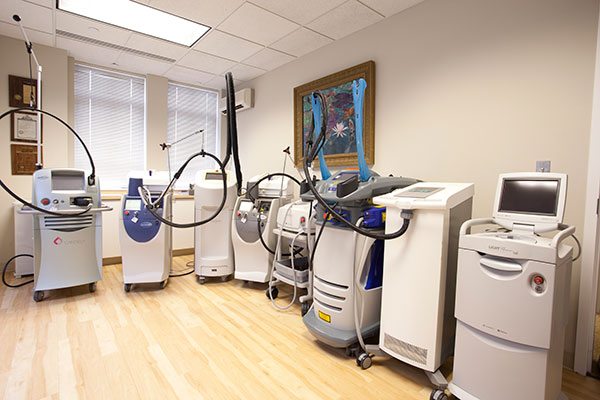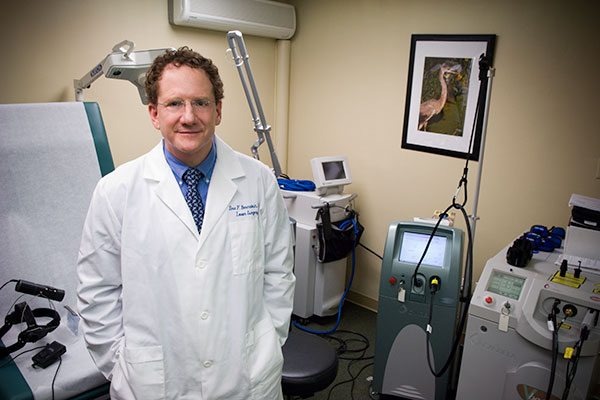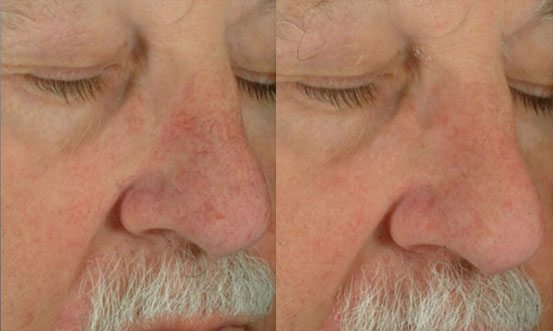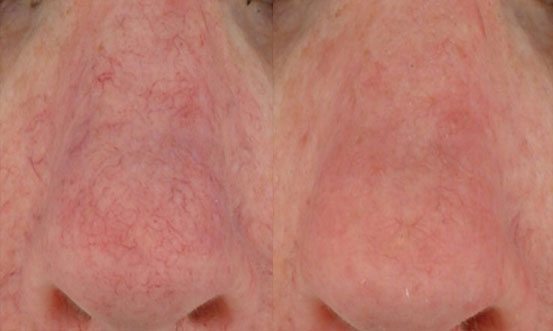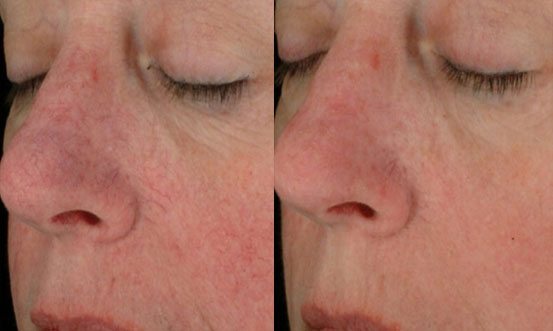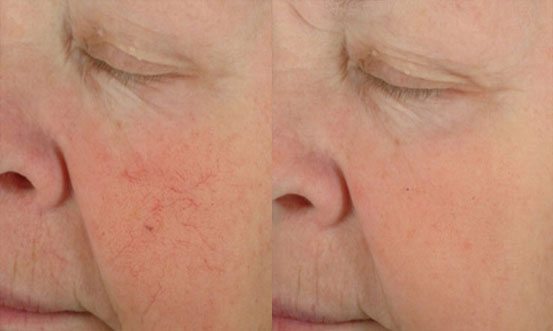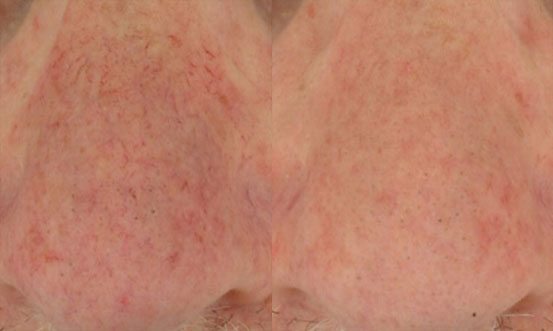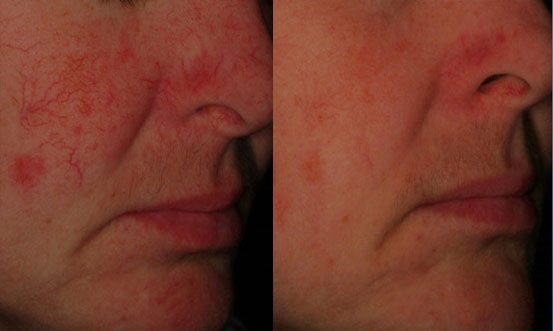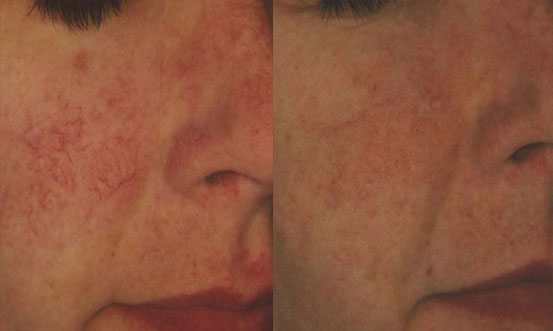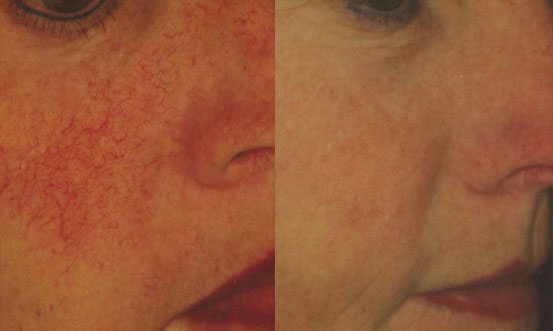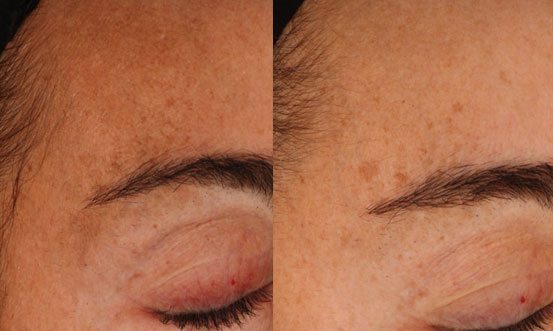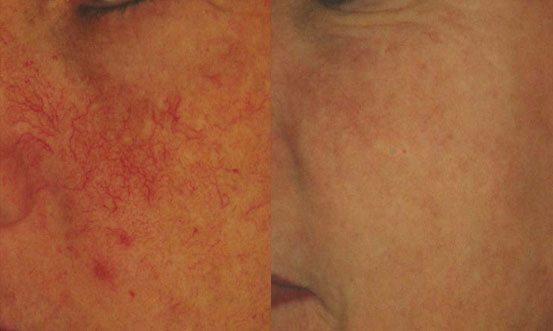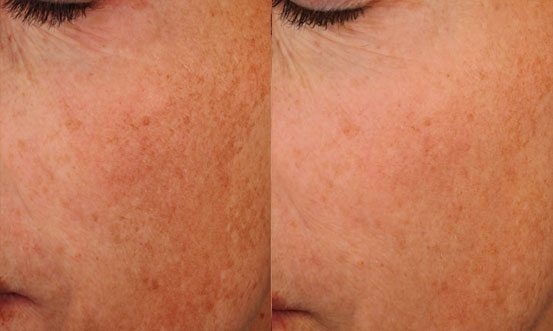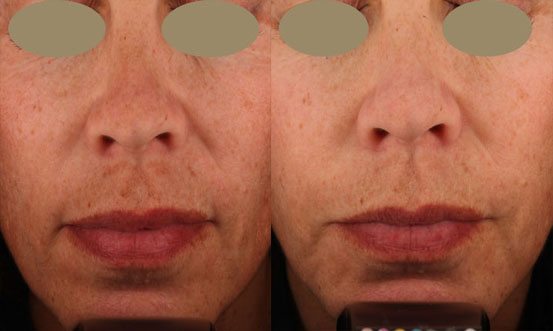Laser treatments work well at improving the 5 key signs of skin aging: fine lines and wrinkles, enlarged pores, sagging skin, pigmentation, and redness.
Since skin aging varies between individuals due to someone’s genetics, sun exposure, skin type and other factors, the right lasers for you may not be right for someone else. Generally, we use different lasers to treat redness, or fine lines and wrinkles in the absence of redness. For example, lasers that address vascularity will also improve fine lines and wrinkles and enlarged pores, and some people even feel they get some small amount of skin tightening after treatment.
Lasers directed at treating fine lines and wrinkles or acne scarring in the absence of redness are often fractionated. This means that they don’t treat the whole skin surface with a large spot, but instead administer grids of tiny treatment beams that treat only a small portion of the skin surface. This leads to quicker healing than lasers that treat the whole skin surface. Generally, these fractionated lasers are either ablative, or destructive to the areas of the skin that they treat, or non-ablative (non-destructive), with quicker healing times. Ablative and non-ablative lasers are not stronger or weaker than one another, they are just different and thus are used to treat different conditions.
Fractionated lasers come in two main types:
- ablative
- non-ablative
Compared to ablative lasers, such as the CO2 or Erbium:YAG lasers, non-ablative lasers do not remove, or ‘ablate’, skin. Most popular non-ablative fractionated lasers include the Fraxel Dual, the Clear + Brilliant, and the newest fractionated picosecond-domain lasers, such as the PicoWay Resolve laser.

